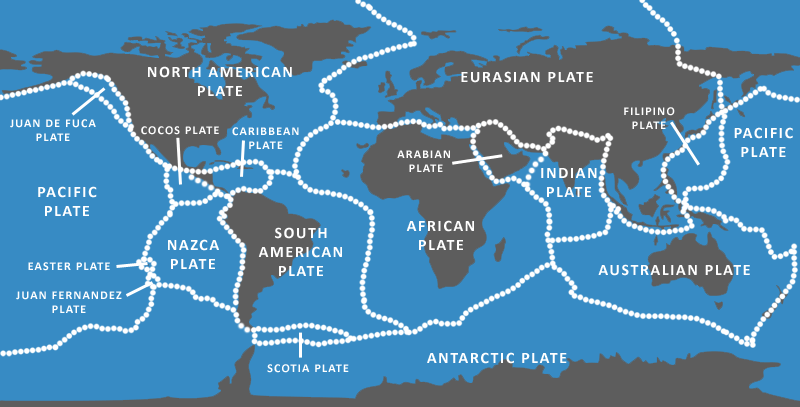Article
Earth movement
This article explains the plate tectonic theory and its consequences
By: Luna Rosenman Cordeu
Have you ever thought why natural hazards are produced? All this starts under the continental and oceanic crust, in the litosphere, where the tectonic plates are in constant movement.
The tectonic plates are divided in seven major plates and some little ones. As it was said before, the plates are in constant movement, but their movements can be different. The constructive is when two plates separate one from the other, causing earthquakes if the plates are continental plates and tsunamis if the plates are oceanic plates. It form volcanoes too because when the two plates separate they let magma go out which cool and form the volcanoe. Another movement is the destructive, that is different from the constructive. This movement appears when two plates crush. One plate must be oceanic and the other continental. This causes earthquakes, tsunamis and mountains because when the two plates crush the oceanic goes under the continental, and the continental goes up. And the last movement is the collision that is when two plates go to the same place, usually one goes faster. This causes earthqueakes and tsunamis.
There is no way to stop natural hazards, but with prevention, the damage will be less. That is why it is important to know how to react in these situations.


Comentarios
Publicar un comentario